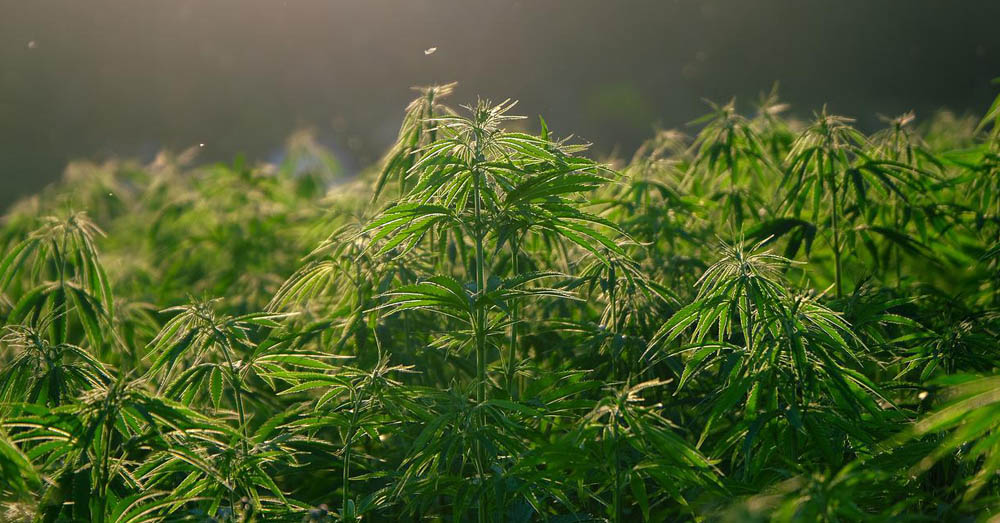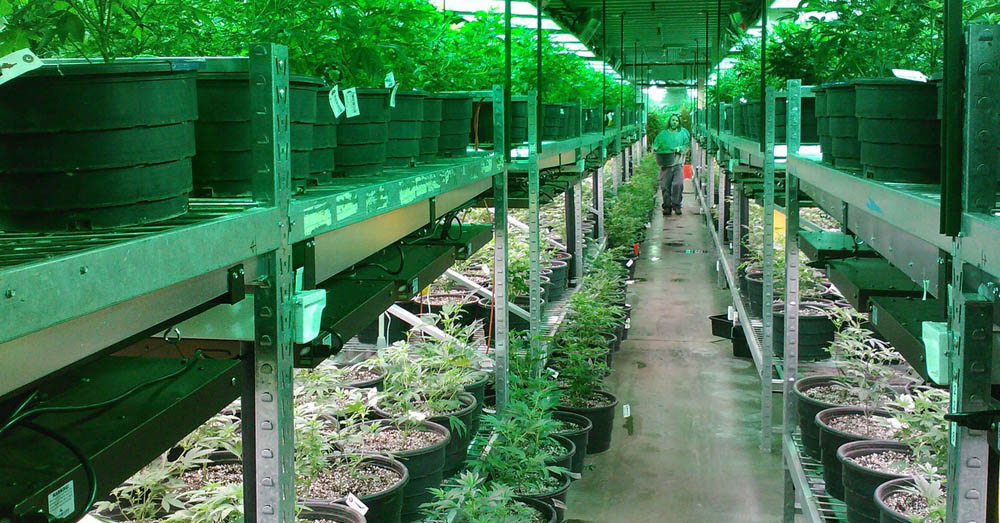Are you looking for a way to make your cannabis yield wider? Maybe you’re a first-time grower looking for an easy gardening technique?
The easiest method, called low-stress training (LST), makes this goal possible. You can increase yields and your harvest quantity with this technique too!
If this is your first time, let us teach you all you need to know about the process.
Follow this step-by-step guide we prepared for you!
What Is Low-Stress Training (LST)?
We always want good and healthy harvests in any plant we have.
The same idea applies to cannabis plants, which is why plant training methods like low-stress training are very much helpful.
Low-stress training (LST) is a technique to change how cannabis plants grow. Instead of the normal vertical growth, you will have wider and horizontally growing marijuana plants.
This is due to the manipulation of light penetration. The same applies to putting ties to guide your plant’s growth direction.
Plant growth naturally goes towards where the source of light is.
In an average open space garden, vegetative growth depends on the sun. Most of the plants grow tall since direct light comes from above.
This is different for LST marijuana plants. Growers ensure all angles and parts of the plants receive light for wider growth.
How to Do Cannabis Low-Stress Training?
Low-stress training might be intimidating, but it is easier than other gardening techniques.
The main objective of LST cannabis plants is for all the stems and levels to receive light. Hence, the top portion is not the only one exposed to avoid average vertical growth.
In other words, apical dominance or preventing one stems from hindering the growth of the others.
There are several bending options for this type of plant training method. You can bend cannabis branches to grow sideways, spirally, or like a Christmas tree.
Through this, you can MAXIMIZE the space for your flat canopy.
With low-stress training, so many growers are HAPPY with 200% wider yields than just leaving their plants to grow by themselves.
Thus, it lets us dig deeper into how to make this development possible. Follow carefully the five easy steps below.
Things to Prepare Before Proceeding
Before proceeding to the actual training stages, let us first discuss what you need to prepare for the entire process.
The same is valid for how they are important and how you should use them in the low-stress training stages.
1. Ties for Plants
A growing young plant has sensitive parts, especially its new fat buds.
Thus, you should be GENTLE and careful with every move you make along the process.
This is also the main reason why you must use types of ties that are soft. Other strings might cause scratches or more severe damage to your plant’s skin.
Cannabis growers recommend soft plant ties or pipe cleaners for easier and safer tying of plants.
2. Duct Tape

Accidentally breaking a branch of your marijuana plant is inevitable in low-stress training.
This is just a normal part of the process, especially for beginners.
Wrap the broken part with duct tape. Leave it for a few days, and your plant will naturally heal on its own.
However, it would be best if you remembered that NOT all plants can recover, especially when the damage worsens.
Thus, you should minimize breaking cannabis stems and branches as much as possible.
3. Scissors for Plants

This tool is primarily used in the first stage of low-stress training cannabis — topping stage or breaking apical dominance.
In other words, it is essential to cutting a few nodes of your entire plant. The same is true for pruning instances, so your plant grows better.
You should remember that STERILIZING your plant scissors before starting the topping process is necessary.
As mentioned above, young plants are sensitive, so we should be extra careful.
4. Bamboo Poles
One of the primary purposes of bamboo poles is to be used as tie holders for your cannabis plant.
You can use this as ADDITIONAL help aside from the plant container holes. You can tie these bamboos on your pots directly or separately.
Most growers arrange these poles horizontally to tie easily during your low-stress training. This enables more light exposure for the side branches of your plants.
5. Small Drill
This is an optional material.
It is mainly recommended for pots with NO holes on the upper rim.
Potholes are essential so that you can tie bent branches on them. Thus, having a hand drill helps make precise holes on the upper edge of pots faster.
But, there are several alternatives if you don’t have the budget, too but for one.
Using a knife or other tools is still acceptable as long as a hole can be made. You can also use fabric pots since most have pre-made holes to tie on.
Step 1 – Cannabis Plant Topping
This topping stage in the vegetative phase is optional. Yet it boosts results if you combine low-stress training with it.
The topping should be done when your cannabis plant growth has already reached 6-8 nodes. You will then top half of them, so 3-4 nodes will remain.
Topping is essential to BREAK the apical dominance in your plant. Cutting its main stem enables more buds and branches to grow instead of just having a one-stem plant.
So, clean your plant scissors and REMEMBER to cut the nodes while leaving a little stem to protect your plant. After this, you still cannot proceed to the next stage immediately.
You have to wait for your plant’s recovery before starting plant training.
When you already see 3-4 or a few more nodes back, it is time to prepare and check for training stems.
NOTE: You can proceed directly to the next step if you are growing autoflowering plants.
Step 2 – Plant Preparation
Do not get too excited. Let’s take the process slowly and check the plants first before you start bending.
Check and examine your marijuana plants. You have to decide which tall or side branches you will be bending and in what direction you want the new growth to go.
Through this, you will know which branches you will put the ties on. You can also determine in what hole in your plant container it will be connected.
If straight plant ties are not enough, you can make them into hooks. In addition, you can prepare safety pins and fishing weights.
KNOWING where to position your bamboo poles is also essential in this phase.
After you are clear with all the next steps you have in mind, you can already proceed with the actual training stage.
TIP: Choose the soft branches and stems for bending. Those hard ones are most likely to break.
Step 3 – Training Phase
This is now the main phase of the whole process—plant training. Your main priority is to let all parts of your cannabis plant receive light equally.
You must make a flat canopy by bending and connecting the tallest stems to your potholes or bamboo poles.
Consider bending and tying these branches SLOWLY to avoid damage and bad growth. Continue stretching and connecting ties until you are sure no node or branch is hidden.
When bent, it is expected that some shoots will not reach the edge of your pot. This is the time to use your hooks, safety pins, or weights for bending stems down to the soil.
If you accidentally break a branch, then tape it immediately for it to recover after a few days.
You may want to GO BACK and check every pot to see if all the branches are receiving light. The same goes for checking if the ties are still holding.
After that, you may proceed to the next low-stress training step, maintenance.
Step 4 – Maintenance
Cannabis’ plant structure enables it to grow within a few days. Thus, you have to check your plant daily for new growth.
Observe the developments, then bend and tie more stems down if necessary. You should do more training if you see dominant shots overlapping the other.
In other words, you must maintain all branches’ heights and levels.
You must monitor, bend, and tie connections during the whole vegetative period. A CONSISTENT low-stress training routine will help you increase yields more.
Through this maintenance process, you can take advantage of your plant’s growth sites. The same is valid for maximizing the whole grow space of your pots and garden.
Missing even just a day will lead to the return of apical dominance. Thus, you should be diligent in your daily monitoring schedule.
After this last stage, you can check this video to see an overview of the whole process:
Step 5 – Flowering Stage
Outdoor plants can be determined easily if they are ready for flower production. This is in contrast to the difficulty level if you are one of those indoor growers.
The flowering stage is when your cannabis plant will exert all its energy to produce bigger yields.
Flowering will help them double in size. Thus, it is crucial that you already MAXIMIZE the growth limits of the middle and side branches before this phase comes.
It would help if you also exerted more energy in maintaining and training your plants. This is primarily during the first month of the flowering stage.
This stage is expected to happen for a good three to four weeks. After approximately 30 days of doubling your low-stress training method, you can already ease out and stop bending.
Flowering is the indication that harvest time is approaching. This means your plant has already nearly reached its full growth.
Bending more in this stage will just cause damage that your plants will be unable to recover.
Why Is Low-Stress Training Popular?
Low-stress training on a cannabis plant is easy and effective for outdoor or indoor growing.
LST is a technique considered by many growers to be better than high-stress training methods. This contributes significantly to why it is widely known and used.
Low-stress methods ensure a plant’s life becomes better and longer via bending instead of cutting. The same is true for focusing on ties rather than giving main stem cracks.
Thus, low-stress training focuses on gentle manners, the opposite of high-stress training techniques.
High-stress training is also one of the growth tips to alter the development of a cannabis plant. This also includes big yields, breaking apical dominance, and more canopy space.
Although bushy plants or other types can still thrive and grow despite broken stems and wounded branches, not all can survive.
The latter happens especially when high-stress training is not done correctly.
Why Should You Do Low-Stress Training? [Advantages]
As mentioned above, different methods in LST increase yield easily and safely.
This makes every low-stress training step friendly to beginning cannabis plant growers. Aside from that, it is also gentle to plants for a better growth process.
Below are more significant reasons why you should do low-stress training:
1. Helps Break Apical Dominance
Dominant shoots are the main reason why a plant grows vertically. This leads to cannabis seeds developing few nodes and tiny yields.
Breaking this dominance will help even up light distribution among all plants and each one’s parts.
This is very HELPFUL, especially for those with a short-spaced indoor or outdoor garden area.
Having the same level of stems helps you maximize space. This is while providing enough and equal sunlight to all your plants.
2. Better Light Exposure
A plant needs light to grow. This is why its growth direction goes towards where the source is.
Breaking the apical dominance is NOT the only reason for having better light distribution on your plants.
Through bending and putting ties on dominant shoots, lower branches and those on the sides can also receive light.
Thus, every part of the plant is enabled to grow properly.
3. Bigger Yields
The previous LST advantages will lead to this positive last positive result.
With better light distribution and more canopy space, cannabis plants develop bigger yields.
The former enables light to hit DEEPER in all parts of your growing plant. The latter gives more space for the branches to stretch and grow.
With low-stress training, you can expect wider yields and more growth in your fabric pots.
4. Easy to Do
Low-stress training is beginner-friendly.
The last and most important advantage of this process is that it is a more uncomplicated gardening technique to do and master.
ANYONE who wants to be a grower can bend a cannabis main stem and tie it to a pothole or bamboo pole.
Why Shouldn’t You Do Low-Stress Training? [Disadvantages]
Cannabis is a vigorous plant.
However, low-stress training is a process that GENTLY caters to all the needs of this plant type when growing.
In other words, it is safe and considered one of the best ways to widen cannabis yields to their maximum limit.
These are among the few reasons why no significant disadvantage can be listed for this method.
Issues will appear if the growers do not diligently follow the systematic process.
LST is indeed safe and easy to do. Yet you can still cause damage instead of growth if you are not careful enough.
Frequently Asked Questions
Low-stress training at a cannabis plant might be easy. But, it will not be possible without enough knowledge and consistent practice.
Thus, we prepared more details that you need to know about this wide-yielding process.
Can You Overdo LST?
Overdoing LST will damage your cannabis plants instead of increasing the yield.
You should not overdo low-stress training.
Training should only be done until you reach the DESIRED yield size or overall result. Then you should stop when it is past the first month of flowering.
On the one hand, the former enables you to maximize cannabis growth until the time it slowly stops growing.
On the other hand, the latter enables you to capitalize on the last burst in growth. This is while not inducing damage for your plants will not be able to heal when it’s near harvest time.
Overall, you can low-stress train your plants continuously. This is true, even if you do it gently every day.
You just have to know when to stop for a better harvest season.
What Week Should You Start Low-Stress Training?
It is vital to begin low-stress training when your plant’s upper or lower branches are still soft.
This means you can start the process a few weeks after you plant the cannabis seeds. You can expect a few node developments at this time.
Many growers check if the height of their plants is already at 4-6 inches. This means your cannabis has already grown a few leaves or branches.
Another indication is when your plant is already at the vegetation stage. This is when growth is mostly happening, so it is best to do LST during this period.
Low-stress training method focuses on bending stems and branches.
When you start low-stress training late will cause BREAKS and cracks since plant parts are already stiff and hard.
Yes, you wrap the broken part with duct tape. Yet, not all plants can heal immediately, especially when it is nearing their full and final shape.
When Should I Stop LST Training?
As mentioned above, overdoing cannabis LST is harmful to your plants.
You should stop low-stress training on cannabis plants after the first 30 days of the flowering stage.
Within the first month into this phase, your cannabis plant growth is still ongoing. Thus, you can continue LST in this short period to slightly manipulate the growth.
Aside from that, buds are slowly developing during the flowering stage. If you continue low-stress training during this time, it will create DAMAGES.
As a result, it will lessen the quality of your marijuana plants.
Thus, it is important to be careful and precise in the first 30 days of flowering cannabis plants.
Can I LST During Flowering?
You can continue for a bit, but you cannot start low-stress training during this time.
You can do Cannabis plant LST during flower production, but only within the first 30 days.
You must not lose count and exceed the maximum number of days. This first month is a stretching period where your cannabis plant is still growing.
However, the next few days are CRUCIAL since baby bud sites will appear. Giving any amount of stress will create damage to these delicate new buds.
Growth manipulation via cannabis LST is still stress training, regardless if it is low.
Thus, disregarding its effects during the flowering of your cannabis plants will just cause a decrease in flowers and cannabis plant quality.
Does Low-Stress Training Slow Growth?
Manipulating is different from slowing growth.
Cannabis plant low-stress training is a way to make the plant grow wider instead of taller. Since it is wider, more plants will be expected during harvest season.
When you low-stress train plants, you give them MORE chances for growth, not just their dominant branches.
Bending the tallest stems enables more light for mostly overshadowed parts. More light intensity drops mean better growth for plants.
Thus, you are just changing the direction of its growth and not the speed.
The same is true for giving more plant parts a chance to develop instead of the usual high-level ones.
Conclusion
There are several growth tips for a cannabis plant. But, low-stress training is one of the easiest methods present. It is also safe not just for the plant but for you as a grower.
First, you don’t have to use RISKY tools to do the job. Second, you don’t have to break or give wounds to your plants that might cause them difficulty healing.
Try low-stress training now if you have cannabis strains like the Power Plant, Strawberry Cough, or Desfrán.
It’s fine to forget some steps. You can always go back here for our low-stress training cannabis growth tips.




